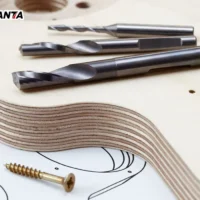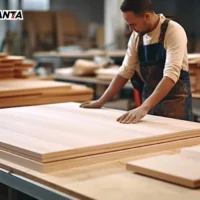In today’s environmentally conscious world, selecting materials with eco-friendly properties is increasingly important. Modern melamine plywood is recognized for its sustainability, especially in terms of low formaldehyde emissions and efficient resource use. This article will explore how melamine plywood meets sustainability goals by adhering to low emission standards and promoting resource conservation through its manufacturing process.
1. Low Formaldehyde Emissions: Meeting E0 and E1 Standards
One key advantage of melamine plywood is its low formaldehyde emission levels. Formaldehyde, often found in wood adhesives, can negatively affect indoor air quality. However, modern it is engineered to meet E0 and E1 standards, ensuring minimal formaldehyde release.
- E0 Standard: This certification guarantees the lowest formaldehyde emissions, making it safe for sensitive indoor environments like homes and schools.
- E1 Standard: Products meeting this standard also offer low emissions, but allow slightly higher levels than E0. It is still a safe and commonly used option for furniture and construction.
By complying with these strict standards, melamine plywood helps create healthier indoor spaces. It reduces the risk of air pollution and makes it a better option for areas where air quality matters.
2. Sustainable Manufacturing: Reducing Resource Waste
Another major advantage of melamine plywood lies in its sustainable production process. Instead of relying on whole timber, It is often made from wood waste like chips and sawdust. This reduces the need for cutting down entire trees and minimizes waste from the timber industry.
- Resource efficiency: By using these wood by-products, manufacturers reduce the demand for raw materials, preserving forests.
- Waste reduction: Using wood waste lowers the overall environmental impact of plywood production.
This approach aligns with sustainable development principles by efficiently utilizing available resources and reducing waste, making melamine plywood a greener alternative to traditional wood products.
3. Durable Melamine Coating: Long-lasting and Easy to Maintain
The melamine resin layer on the plywood adds durability, giving it a hard, smooth surface that is resistant to scratches, moisture, and chemicals. This coating significantly increases the product’s lifespan, reducing the need for frequent replacements.
- Easy cleaning: Its smooth, non-porous surface makes it simple to clean without the need for harsh chemicals.
- Long-lasting: Its tough exterior ensures that it maintains its appearance and functionality over time.
Because it is durable and easy to care for, melamine plywood is ideal for applications that require low maintenance. This longevity means fewer replacements, saving both materials and costs in the long run.
4. Supporting a Sustainable Future
As sustainability becomes a focus in construction and design, melamine plywood fits perfectly into eco-friendly projects. Its combination of low formaldehyde emissions, efficient production, and durability makes it a standout material. It not only meets practical needs but also supports the larger goal of resource conservation.
Conclusion: Melamine Plywood’s Role in Sustainability
In conclusion, melamine plywood offers a unique combination of eco-friendly features. Its low formaldehyde emissions, compliance with E0 and E1 standards, and use of recycled wood materials make it a sustainable choice. Additionally, its durability and low maintenance requirements reduce long-term environmental impact. For anyone seeking a material that balances performance with environmental responsibility, melamine plywood is an excellent option that contributes to a sustainable future.





















